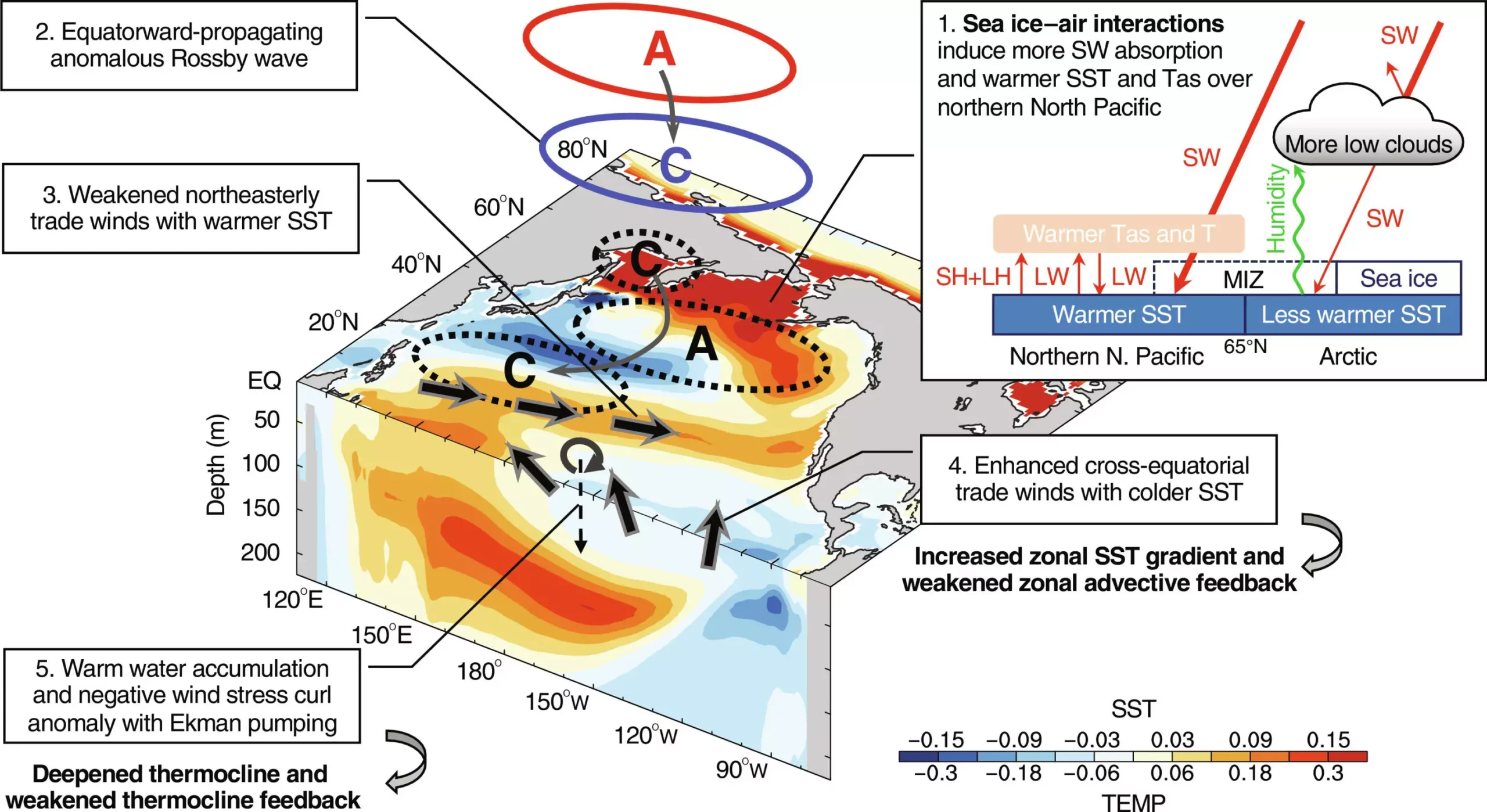The recent study published in Science Advances sheds light on the relationship between melting Arctic sea ice and the strength of El Niño events. According to researchers at the University at Albany and Nanjing University of Information Science and Technology, the interaction of Arctic sea ice with the atmosphere plays a significant role in modulating the intensity of El Niño events. The study found that as Arctic sea ice continues to decline, El Niño events may become even stronger.
The researchers utilized a combination of climate model simulations and observational data to analyze the impact of Arctic sea ice on El Niño events. The study revealed that the current interaction of Arctic sea ice with the atmosphere reduces the strength of El Niño events by up to 17%. This reduction in intensity is a result of the asymmetrical impacts of positive and negative sea-ice anomalies on surface fluxes, which affect the exchange of heat between the ocean and the atmosphere.
With Arctic sea ice melting at a rate of 12.2% per decade since the late 1970s, projections indicate that the region could experience its first ice-free summer by 2040. This rapid decline in Arctic sea ice, coupled with global warming, is expected to lead to a strengthened El Niño in the upcoming decades. The study’s lead author, Aiguo Dai, emphasized the need for a more realistic representation of sea ice-air interactions in current climate models to better project the impacts of El Niño in a warming future.
Historical Changes in El Niño Events
The study compared historical changes in El Niño events from 1921-1960, characterized by strong sea ice-air interactions, to the period from 1971-2000, which saw weaker interactions. The findings from the study were qualitatively consistent with observed changes in El Niño events over the years, highlighting the significant role of Arctic sea ice-air interactions in regulating El Niño activity over the tropical Pacific Ocean.
Overall, the study underscores the importance of understanding the complex interactions between Arctic sea ice and El Niño events. As the Arctic continues to warm and sea ice continues to decline, the implications for El Niño events and global climate patterns are significant. By taking into account these interactions in climate models, scientists can better predict and prepare for the impacts of a changing climate. The research by Dai and his collaborators provides valuable insights into the interconnected nature of climate systems and the urgency of addressing Arctic sea ice loss.


Leave a Reply